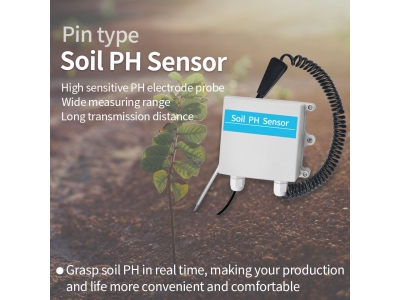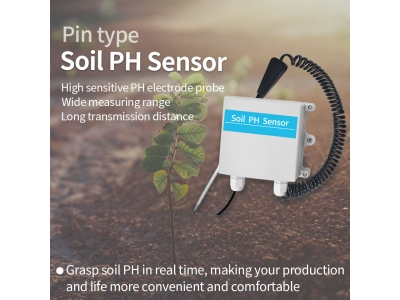Soil sensors are devices used to measure and monitor various parameters related to soil health and moisture levels. They can provide valuable information for farmers, gardeners, and researchers to optimize crop growth, reduce water usage, and prevent soil erosion. Soil sensors come in various types, each designed for specific applications and varying levels of accuracy. In this article, we will explore the different applications of soil sensors and their features.

Soil Moisture Measurement
One of the primary applications of soil sensors is to measure soil moisture levels. Soil moisture sensors typically consist of two probes that are inserted into the soil. These probes measure the electrical resistance of the soil, which correlates with the moisture content. By monitoring the soil moisture levels, farmers and gardeners can optimize irrigation schedules and prevent overwatering or underwatering of crops. Soil moisture sensors are also used in research to study plant responses to drought conditions and soil water availability.
Soil Temperature Measurement
Soil temperature sensors are used to measure the temperature of soil at various depths. These measurements are critical for understanding the effects of temperature on soil health and plant growth. Soil temperature sensors are also used in research to study the effects of climate change on soil ecosystems and to optimize soil temperature for crop growth.
Soil Nutrient Measurement
Soil nutrient sensors measure the concentration of various nutrients in the soil, including nitrogen, phosphorus, and potassium. These measurements are critical for understanding soil health and plant growth. Soil nutrient sensors are also used in agriculture to optimize fertilizer use, prevent soil degradation, and reduce environmental pollution.
Soil Erosion Measurement
Soil erosion sensors measure the rate of soil loss due to factors such as wind and water erosion. These measurements are critical for preventing soil degradation and maintaining soil productivity. Soil erosion sensors are also used in research to study the effects of land use changes and climate change on soil erosion rates.
Soil Compaction Measurement
Soil compaction sensors measure the amount of pressure required to compress the soil. These measurements are critical for understanding soil health and plant growth. Soil compaction sensors are also used in agriculture to optimize tillage practices, prevent soil compaction, and reduce soil erosion.
Data Logging and Transmission
Soil sensors record and store all collected data in a data logger. The data logger stores the data in a digital format and can be programmed to transmit the data to a remote server or database for analysis in real-time. This information is vital for farmers, gardeners, and researchers who need up-to-date soil data for decision-making.
Conclusion
Soil sensors play a vital role in measuring and monitoring various soil parameters. They provide valuable information for farmers, gardeners, and researchers to optimize crop growth, reduce water usage, and prevent soil erosion. Soil moisture, temperature, nutrient, erosion, and compaction measurements are crucial for understanding soil health and plant growth. Soil sensors also have data logging and transmission capabilities to ensure that the collected data is accessible in real-time for analysis and decision-making. By utilizing soil sensors, we can gather accurate and reliable soil data for better planning, research, and decision-making in various fields.






